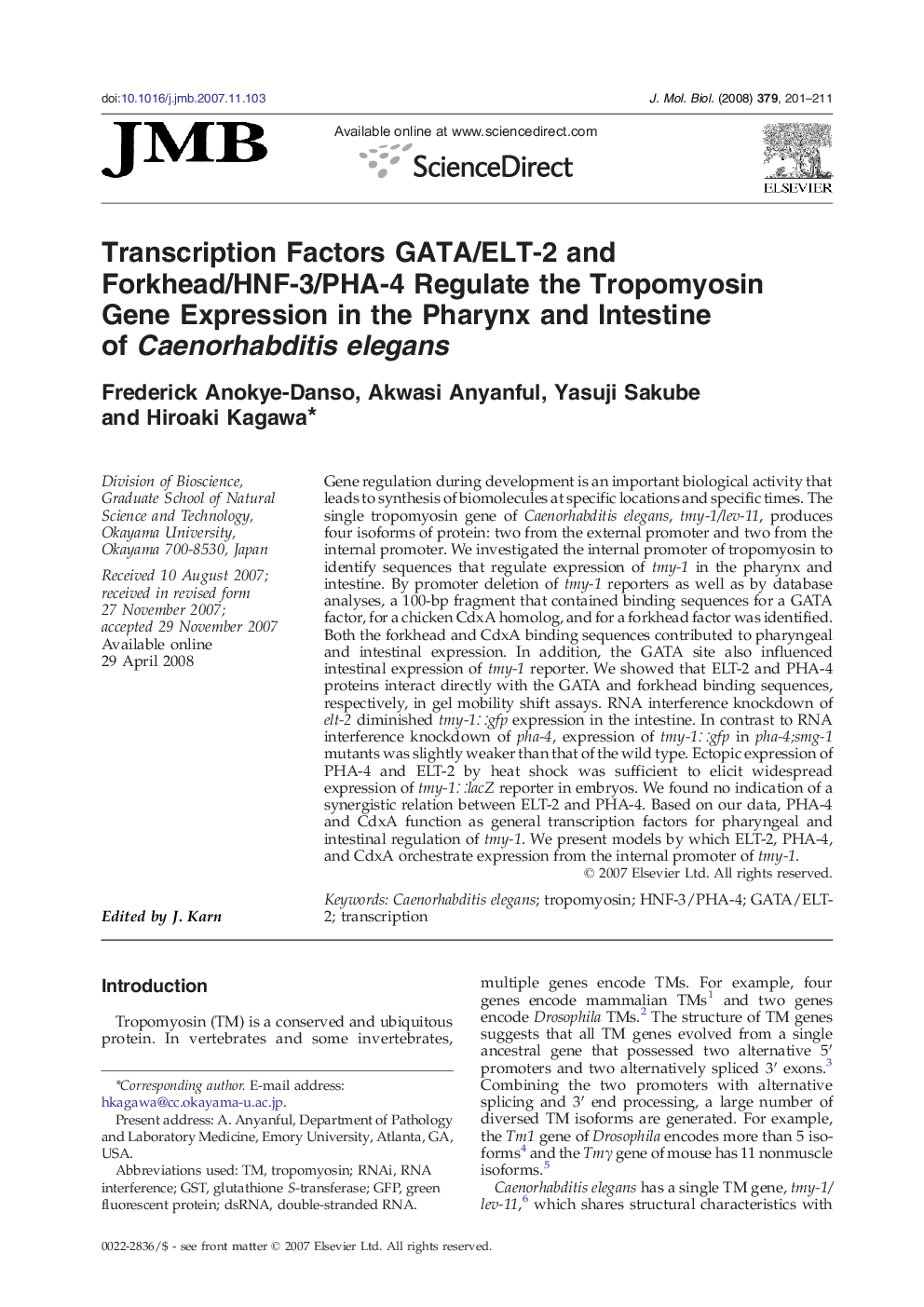| Article ID | Journal | Published Year | Pages | File Type |
|---|---|---|---|---|
| 2187478 | Journal of Molecular Biology | 2008 | 11 Pages |
Gene regulation during development is an important biological activity that leads to synthesis of biomolecules at specific locations and specific times. The single tropomyosin gene of Caenorhabditis elegans, tmy-1/lev-11, produces four isoforms of protein: two from the external promoter and two from the internal promoter. We investigated the internal promoter of tropomyosin to identify sequences that regulate expression of tmy-1 in the pharynx and intestine. By promoter deletion of tmy-1 reporters as well as by database analyses, a 100-bp fragment that contained binding sequences for a GATA factor, for a chicken CdxA homolog, and for a forkhead factor was identified. Both the forkhead and CdxA binding sequences contributed to pharyngeal and intestinal expression. In addition, the GATA site also influenced intestinal expression of tmy-1 reporter. We showed that ELT-2 and PHA-4 proteins interact directly with the GATA and forkhead binding sequences, respectively, in gel mobility shift assays. RNA interference knockdown of elt-2 diminished tmy-1∷gfp expression in the intestine. In contrast to RNA interference knockdown of pha-4, expression of tmy-1∷gfp in pha-4;smg-1 mutants was slightly weaker than that of the wild type. Ectopic expression of PHA-4 and ELT-2 by heat shock was sufficient to elicit widespread expression of tmy-1∷lacZ reporter in embryos. We found no indication of a synergistic relation between ELT-2 and PHA-4. Based on our data, PHA-4 and CdxA function as general transcription factors for pharyngeal and intestinal regulation of tmy-1. We present models by which ELT-2, PHA-4, and CdxA orchestrate expression from the internal promoter of tmy-1.
